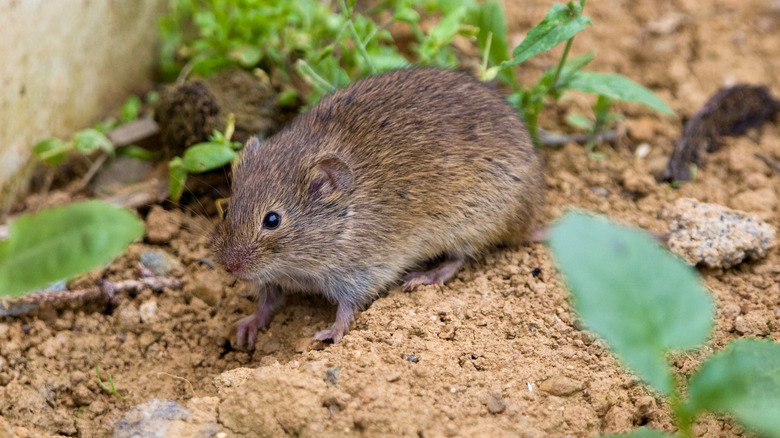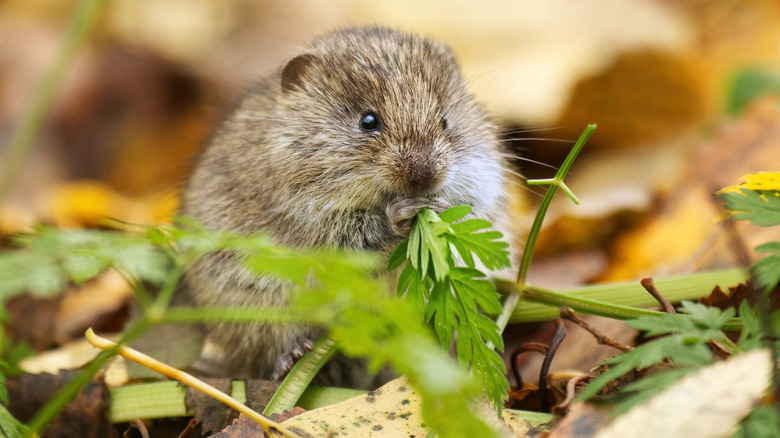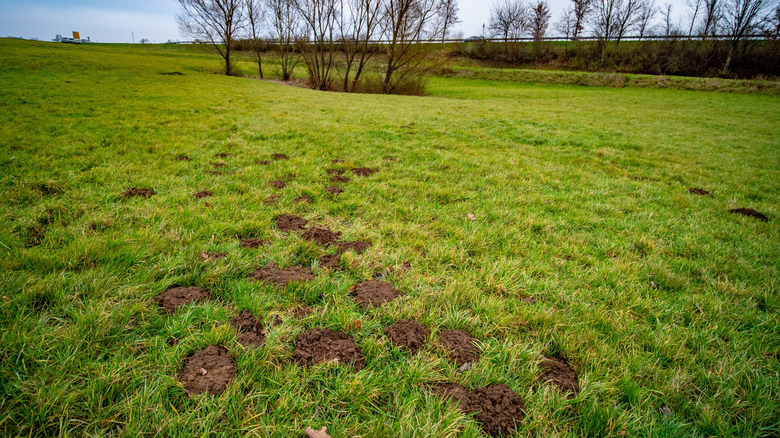How To Get Rid Of Voles Using Unconventional Methods You Haven't Tried
Voles look like the invention of a children's book illustrator who has been asked to draw a mouse as a portly, jolly gentleman. Mice are cute, but voles are well on their way to being adorable. Yet this doesn't protect them after gardeners get a taste of their sheer destructive might. Because voles, it turns out, are an utter nightmare for anyone who cares about their plants. Indeed, voles are among the worst garden pests you'll want to banish from your garden immediately.
House Digest spoke exclusively with Dr. Chris Christensen, who (along with his son Matt Christensen) has owned a Truly Nolen Pest Control franchise for 26 years in Lexington, Kentucky, while also servicing Cincinnati, Ohio. The father/son team also handles voles through another franchise called Critter Control, serving the same two cities. We asked Christensen about voles and, more importantly, how to rid one's lawn of them.
The animal's distinct appearance makes them easy to spot. "Voles, or the common meadow vole, is a small rodent that looks like a mouse that has been lifting weights and has a very short tail," Christensen said. "These dark gray rodents are much more robust than a field mouse." And that's about the only positive thing Christensen has to say about the critters.
What's the big deal about voles, anyway?
Voles don't usually present much of a problem for homeowners because they prefer more cover than is provided by the average residential lawn. But it's not uncommon to find voles in gardens, and they can certainly make their presence known in a well-manicured lawn as well. If you're wondering which pest is creating holes in your yard, it might very well be voles. "Voles are found in huge numbers in pastures and grasslands," Dr. Chris Christensen said when he spoke exclusively with House Digest. "They can be an issue in well-maintained lawns where their damage looks like they have created a tunnel in the foliage with periodic holes burrowed into the soil."
Given the chance, voles can wreak havoc on a garden, destroying plants from bulbs to food crops to fruit trees. They are a particular risk to trees and woody plants because of their habit of girdling them — chewing through the stem or trunk of the plant all the way around. "[In the winter,] they are active under snow cover while continuing their ceaseless and continuous feeding," Christensen explained. "They are a major problem when they use the protective snow cover to allow them to feed on the bark of ornamental or agriculturally grown fruit trees. This feeding can completely girdle the trees, resulting in death."
Unconventional ways of combating voles
There are many ways to rid your yard of voles, with varying degrees of success. During House Digest's exclusive chat with Dr. Chris Christensen about unconventional ways to control vole populations, he gave us three distinct approaches a homeowner might try. "If you want to incorporate a biological control," Christensen said, "go to the pound and get a couple of outdoor house cats. House cats are good hunters and they will decimate the vole and chipmunk populations."
If mercenary cats aren't an option for you, Christensen has a couple of other ideas in the form of chemical controls and traps. "Placing rodent bait stations outside for mouse and rat control will also attract voles; they will eat the bait, which will subsequently kill them," Christensen said. Trapping is also possible but has some important downsides. "Snap traps placed in the protective cover of a large bait box or specially constructed protective trap boxes will give limited success against voles," Christensen said, adding that this option can be labor intensive. When in doubt, the pest expert suggests using a combination of methods to get rid of pesky garden voles.


